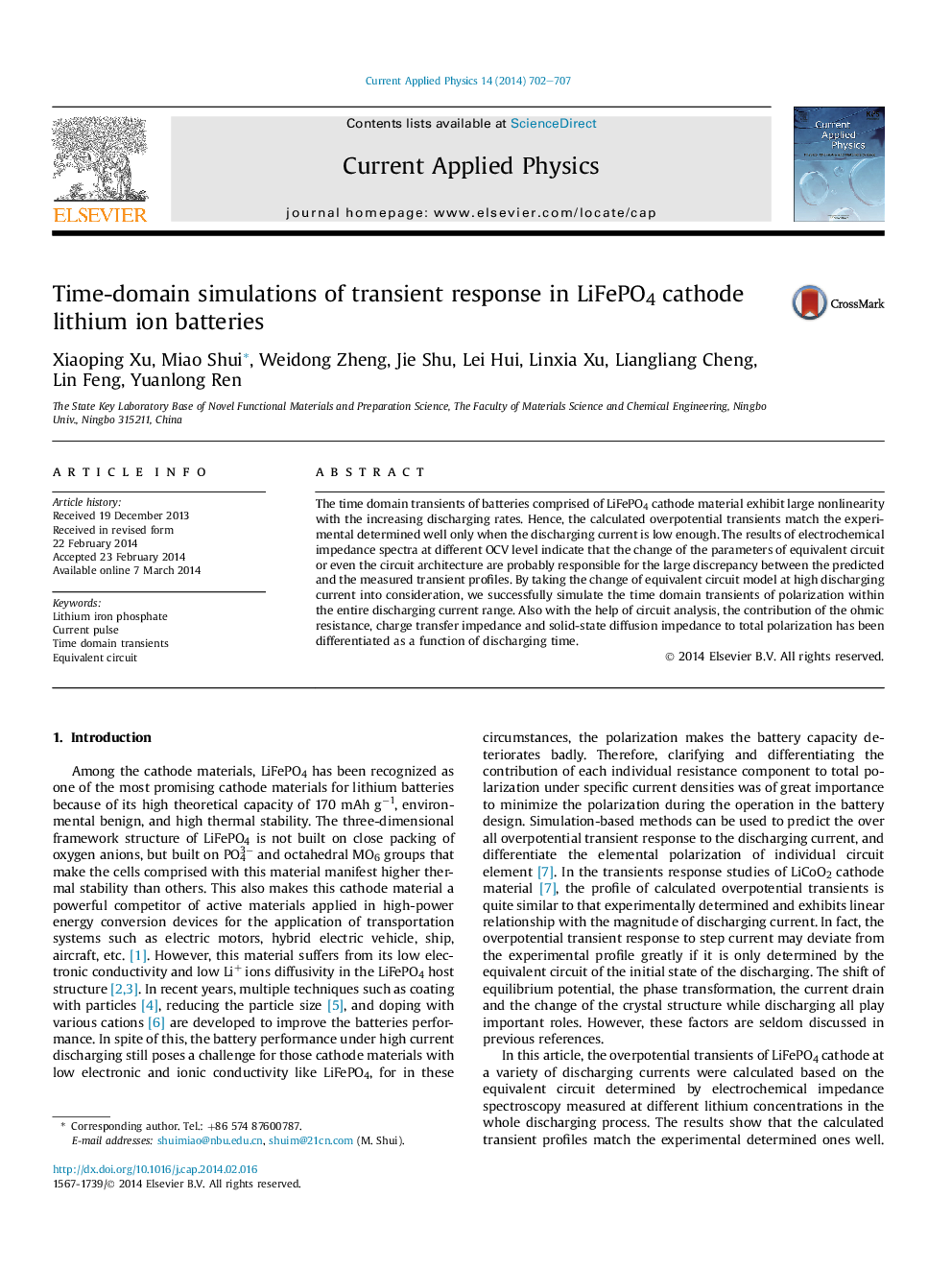| Article ID | Journal | Published Year | Pages | File Type |
|---|---|---|---|---|
| 1786334 | Current Applied Physics | 2014 | 6 Pages |
•Propose a method to simulate overpotential transients at large current.•The fraction contributions of individual element change with OCV.•Good matches were observed based on the same intercalation level x in LixFePO4.
The time domain transients of batteries comprised of LiFePO4 cathode material exhibit large nonlinearity with the increasing discharging rates. Hence, the calculated overpotential transients match the experimental determined well only when the discharging current is low enough. The results of electrochemical impedance spectra at different OCV level indicate that the change of the parameters of equivalent circuit or even the circuit architecture are probably responsible for the large discrepancy between the predicted and the measured transient profiles. By taking the change of equivalent circuit model at high discharging current into consideration, we successfully simulate the time domain transients of polarization within the entire discharging current range. Also with the help of circuit analysis, the contribution of the ohmic resistance, charge transfer impedance and solid-state diffusion impedance to total polarization has been differentiated as a function of discharging time.
Graphical abstractThe observed over potential transients at various discharging rates are best modeled on EIS spectra measured at specific OCV levels.Figure optionsDownload full-size imageDownload as PowerPoint slide
